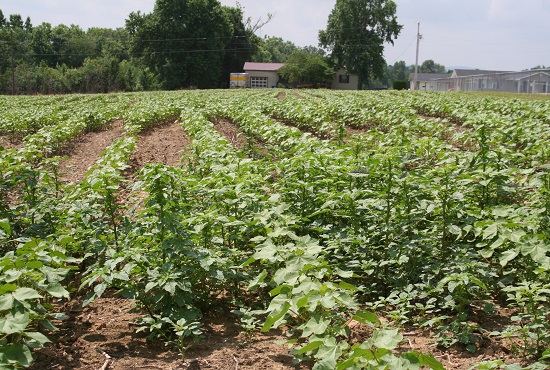Drought Concerns Keep Driving Bull Market
Just like last week, the weekly close saw the market dive almost limit down after setting contract highs earlier in the week. More of that activity should be expected next week, both to the upside and to the downside. New contract highs should be made, but weekend jitters will likely find the speculators taking profits and bailing out, just as we have seen the past two weeks.
The on-call sales to on-call purchases ratio remains very bullish, but once mills halt their buying, the market heads south. Between now and June 24, mills must buy July futures contracts representing about 6 million bales, while known sales of July futures are only some 500,000 bales. Thus, the ratio of buying to selling is nearly 12 to 1 – very bullish.
Cinco de Mayo found the Rio Grande Valley crop with good moisture, thus that small portion of the Texas crop is in great shape for this time in the season. That crop (October futures) will increase in value as it should be high quality and represent the early U.S. crop. Of course, more moisture will be required as the season progresses.
The bulk of the Texas and Southwestern U.S. crop remains in extreme drought; thus, the irrigated crop is in danger of not being planted or, at best, facing a difficult growing period. However, Memorial Day is still in front of us, so the Southwest still has a chance to harvest a partial crop.
Yet, with each passing day, the worst drought on record creates that much more difficulty in harvesting anything across the U.S.’s primary production area. The new crop December contract continues to race to higher ground as the Texas crop looks smaller and smaller with each passing day.
Projecting the size of the 2022 crop – given a record drought in the U.S. Southwest – suggests the crop could fall as low as 12-13 million bales. This is the fuel that keeps the bullish fire under the December futures contract – the fact that U.S. production could be reduced a full one third of what would typically be expected.
Not only did prices slip in the face of very bullish on-call sales, but the very strong export sales and exports shipments. This speaks to the lack of sellers in the market, i.e., most of the players in the market are buyers. Actual physical cotton activity is very limited as most of the business is between futures sellers and futures buyers. That is, there is very little cash business being concluded. Thus, the market will remain very volatile until the on-call sales to on-call purchases ratio becomes more balanced. That will likely be at least another two weeks, probably three.
U.S. export sales and shipments were very active on the week as net sales for 2021-22 delivery totaled 235,800 bales – 232,400 upland and 3,400 Pima. Another 93,200 bales of upland were sold for the 2022-23 season. Shipments were the highlight, as upland shipments were 426,600 bales and Pima shipments were 21,200. This, and year-end Census corrections, puts the USDA export estimate of 14.75 million bales within reach.
The May USDA supply demand report will be released May 12 at 11:00 AM Central time. The Cotton Market Roundtable panel will discuss the report later that day at 1:30 Central time on the AgMarket Network. Here are the details if you’d like to listen or participate.
The market must continue to eat through the 6 million-plus bales of on-call sales held by textile mills. This keeps the 150-160 cents objective on the July contact in sight. Too, with the record drought in the Southwest, December futures will continue its challenge of 130 cents with a 140-cent objective.
Give a gift of cotton today.








